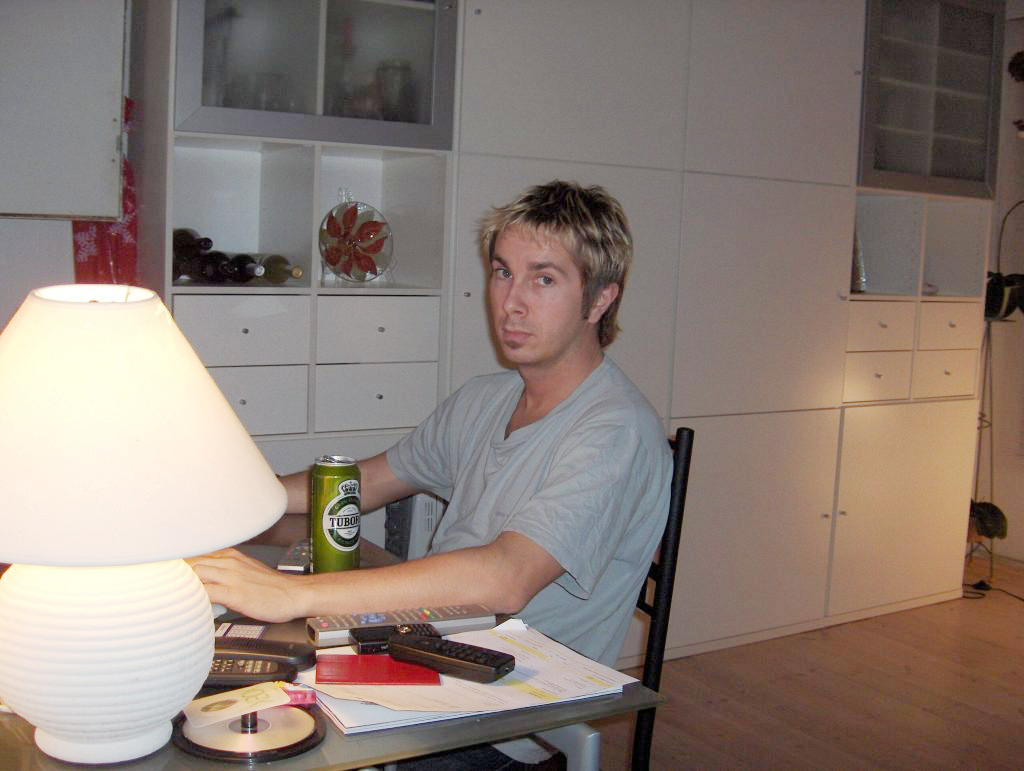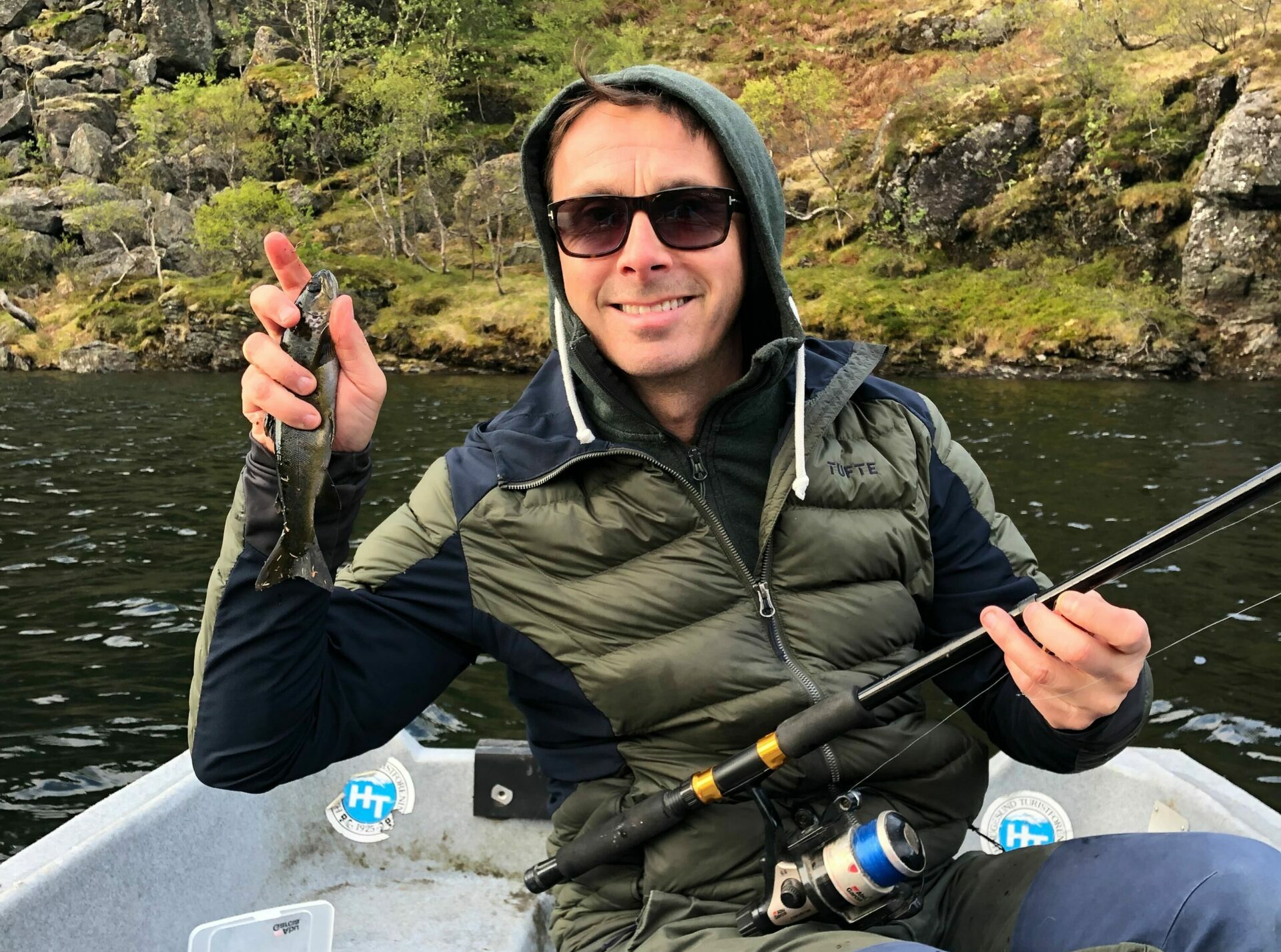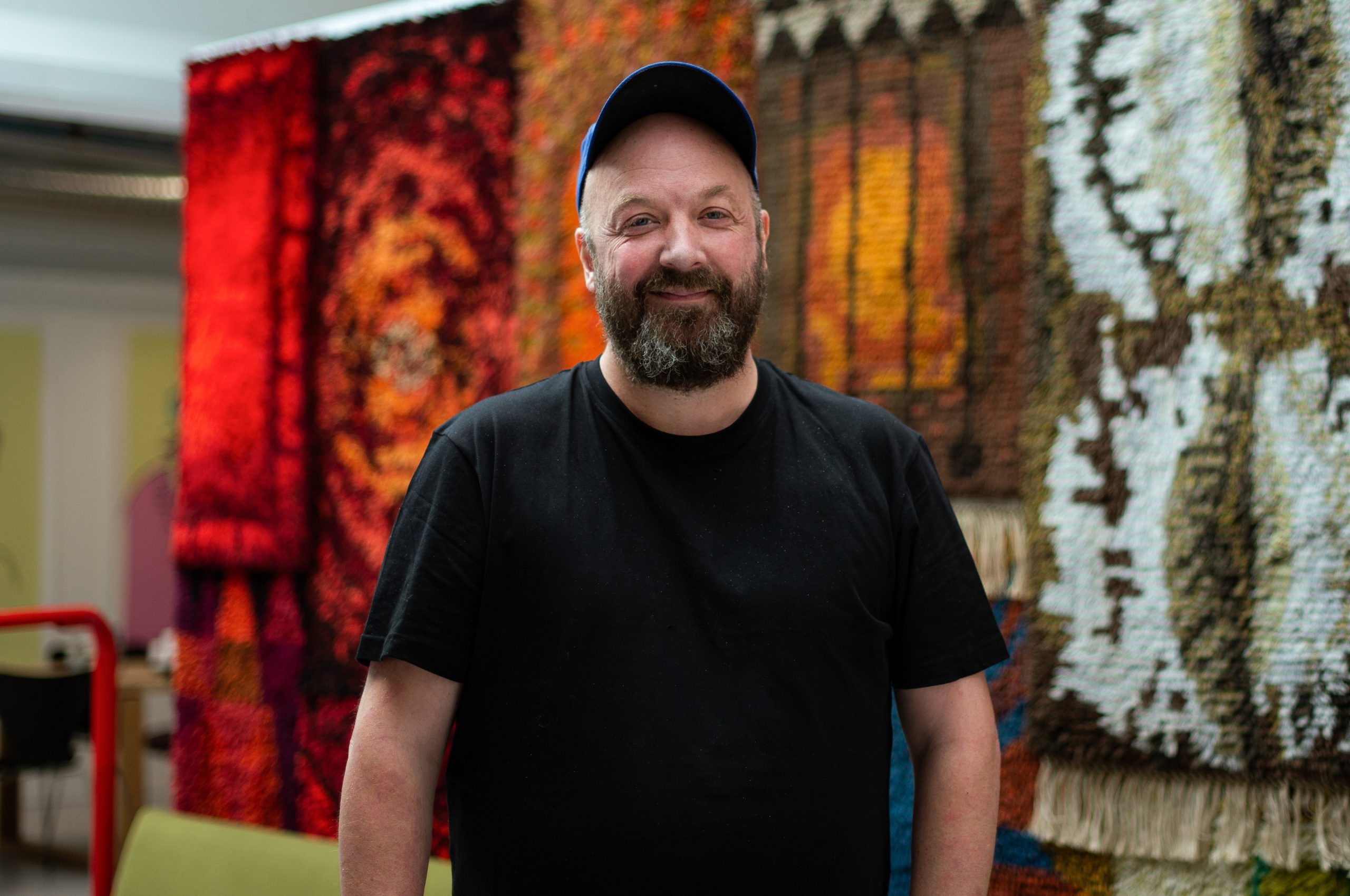The inspiring – and deeply personal – story of how our new head of product development conceived, built, and sold his own SaaS company.
In this interview, Bjørn Ivar Knudsen talks about:
- The overheard conversation that put him on the track to SaaS success
- How being a misfit from early on shaped him into a successful entrepreneur
- The ‘euphoric’ experience of his first paying customer, and how he won thousands more afterwards by helping them ‘walk on the grass’
- The tactics he used to build his customer base …including the underhand ones
- How he got on the radar of the market-leading software firm, then persuaded them to buy his platform

When you talk to Bjørn Ivar Knudsen, there’s always a glint in his eye.
Is it a sense of mischief or just a restless curiosity? In my experience it’s usually a bit of both.
Those traits have served him very well in the past. They helped BIK (as he’s fondly known ’round these parts) to design, build and finally sell his telematics software, QuickLog, to market-leader ABAX, contributing to the evolution of Europe’s second-largest asset tracking platform.
His latest move is to step down as chairman of SmplCo to join the company full time, so he can help entrepreneurs and innovators to bring their own digital dreams to life. (A decision he wryly puts down to the fact that ‘SmplCo has suddenly got so interesting and profitable’.)
A euphoric, defining moment
When I ask BIK about his success as an entrepreneur, he doesn’t focus on that holy grail for entrepreneurs: exiting.
Instead, he keeps coming back to his first sale and his first customer.
‘That was euphoric, a defining moment,’ he says. ‘In that moment I knew somebody felt something I’d created was worth something to them; so much so that they were willing to pay for it.’
‘I still remember the names of my first customers,’ he adds with a big smile on his face. ‘The very first one was called Lars, he was a golf pro and a travelling salesman.’

How did winning that first customer feel, compared to the sense of accomplishment that came at the other end of the journey, when he sold the business?
‘Selling a business is not like getting your first customer,’ BIK says. ‘It’s a final confirmation that you have built something of value. And of course, the money arriving in your bank account is a great reward for all the effort and time and stress.’
‘But the best moment is when the first customers use your software. There’s no feeling like that.’
The origins of BIK
Bjørn Ivar’s backstory would delight a Hollywood scriptwriter.
‘I’ve always been a misfit,’ he says. ‘I’ve never felt comfortable unless I’m doing my own thing.’
Both nature and nurture clearly played their part in that.
‘I was born in what would be considered the worst part of this town back in the 70s,’ BIK says. ‘Then I grew up in what was then the second worst place, in the 80s!’
‘I had a teacher who complained that I didn’t want to learn but that wasn’t true – I just struggled to learn in the traditional way,’ he explains. ‘You’d probably get some diagnosis and help now, but there wasn’t any of that.’

This was a crossroads in BIK’s entrepreneurial journey, although he could not possibly have realised it all those years ago.
‘I have a passion for simplifying things, and I think that comes from my school days,’ he says. ‘I used to take longer than most to get the hang of tasks and problems.’
‘So, I got into the habit of finding different ways to tackle them, to simplify them and – unconsciously – challenge the established way of thinking, which was often overly-complicated.’
He quickly discovered he wasn’t alone.
‘When I simplified things for myself, I found there were a whole lot of other kids who were just pretending to understand. So, I ended up helping them too.’
A fateful telephone call
That desire to simplify ideas and help people to solve problems never went away.
You get the sense that BIK wants to help everyone… even if they haven’t asked for him for help.
The genesis of his telematics firm, QuickLog, is a case in point.
‘I came up with my first SaaS company after I overheard an accountant complaining about how bad their employees were at logging business travel mileage,’ he says
‘They were saying how much money could be saved if there was a program that could create and keep travel records, and I thought: “Hmmm…”’

BIK’s programming skills were a bit outdated, so he got a book called “Learn PHP in 21 days”.
‘Around 18 days later, I’d created a simple prototype for something that would determine travel destinations and distances and store them in the cloud,’ he says, laughing at his own audacity.
‘I tested it on my friends, and – to my great surprise – most were really impressed with how it worked.
‘This eventually became QuickLog,’ he explains. ‘When we sold that company to telematics leader Abax ten years later, my little start-up had grown into the largest app- and SaaS-based service of its kind in the country.’
‘Help people walk on the grass’
That growth was driven by a genuine desire to understand his customers and put his ego to one side.
‘You have to solve someone else’s problem if you’re going to succeed,’ BIK says. ‘In fact, you don’t even need to solve it, just help make something they don’t like a bit easier for them.’
‘So often, nobody cares. They hate the task. They don’t love your solution. They just love spending less time on getting their job done.’
‘What they really want is for you to make their lives easier and help them do more of what they love; whether that’s making more money, spending more time with their kids, going fishing, whatever.’
‘You can quickly get caught up in ego,’ he adds. ‘But you are just an atom in their lives. They have their own struggles and KPIs and things they want to solve, and you’ve got to do whatever you can to help with that.’

To make your solution work, you’ve got to solve your customers’ problems in ways that work for them.
‘You’ve got to respect and accommodate people’s bad habits, their way of working,’ Bjørn Ivar adds.
‘People don’t keep to the path, they want to walk on the grass if it’s easier and quicker for them.’
‘So, you’ve got to fit in with them. That’s what we did with the mileage claim software and why it was a success.’
It’s good to talk
Getting this right meant BIK getting out in the market and talking to as many people as possible.
‘To start with, there were no barriers between our QuickLog team and our users,’ BIK says. ‘We were listening to them all the time. Even when we got to thousands of users I was still calling up and talking to as many as I could.’
Bjørn Ivar dismisses the often-held fear that if you get out into the market and talk to people, someone will steal your ideas.
‘Innovators – particularly start-up founders –have a tendency to be afraid of sharing their ideas,’ he says. ‘But this is usually your ego speaking. People don’t usually steal ideas, they are more interested in their own ones.’
Instead, he believes secrecy puts limitations on innovators.
‘You need to think: “Is this the fastest way to get this to market?”’ BIK says. ‘And you won’t get the answer unless you get people on board, share ideas, and get feedback.’
‘You won’t get any of that that if you go around being all secretive.’
Guerrilla War
The only time Bjørn Ivar did require secrecy was when he turned to marketing tactics that were …questionable.
‘There was no social media when I started, it was all about my banners on different webpages and in magazines,’ he says. ‘But I tested everything to see where I’d get the best return.’
‘The best traction I got was fax marketing because all the offices had faxes – so I could get straight in there – and I knew all the companies needed what I was selling.’
‘I tested everything, including black [all ink] backgrounds that really stood out but made people angry because they got ink all over themselves!’

With a cheeky smile Bjørn Ivar turns to the darker arts.
‘The tech websites used to do software reviews that anyone could do if they registered,’ he says. ‘So, I registered my software and created lots of different aliases to review my own software. I used to set an hour aside each night to do it!’
That went on until one user got suspicious and started replying to the reviews asking what the reviewer’s interest in the software really was…
Selling the business
Bjørn Ivar made so much noise in his industry that one of the big players, ABAX, came knocking.
He was ready for them.
‘I got a call from a guy representing ABAX,’ he says. ‘Straight away, I went to research them so I could understand what they were missing and where they were coming from,’ BIK says.
‘When I went to visit, I guess they’d already spent quite a lot of time picking my product apart, so they knew it was valuable to them – and I knew that too.’
‘Because of all the marketing I’d done they had no idea how small my business was, so I had an advantage,’ BIK adds.
He went in with one goal: to give his suitors the impression he was fierce competition with skills and ideas they didn’t have.
‘You should never go into these meetings with your cap in your hand,’ Bjorn Ivar says. ‘Go in proud and confident. You should never give the impression that you need them, even if you probably do.’
‘If a rival is looking at you, give the impression you are standing on your own two feet and – even if you aren’t a threat now – at some point they are going to have become scared of you.’

Everlasting truths
Despite 20 years passing since he first stepped into the world of entrepreneurs and innovation, Bjørn Ivar says the rules haven’t changed, even if the tech has.
‘The key to success is getting out there and digging the ditches,’ he says. ‘You need to talk to customers and get under their skin; to feel and see and experience their pain. You need to be a user of your own system.’
‘Success lies in getting out of your bubble and getting into your customers’ shoes.’



